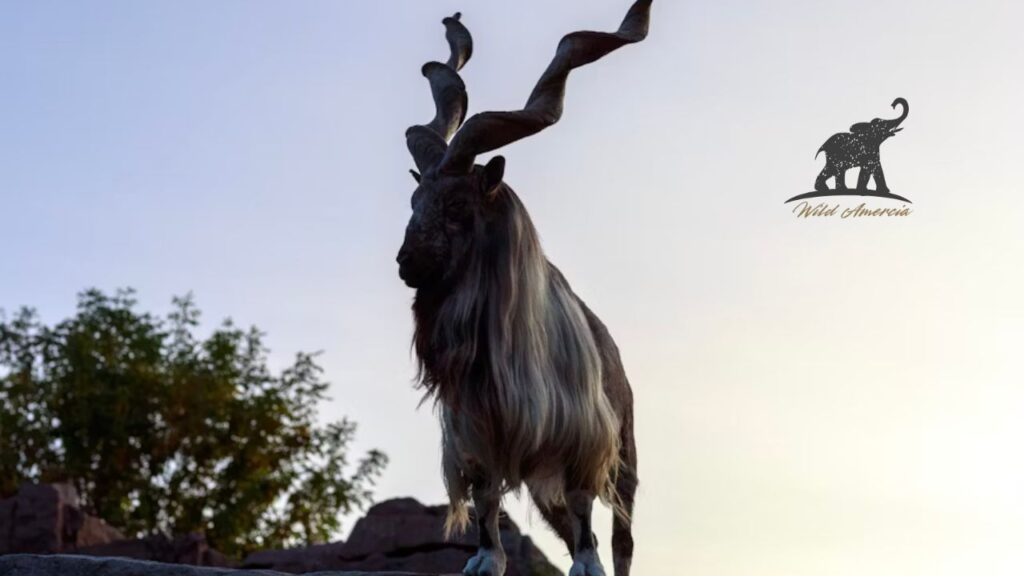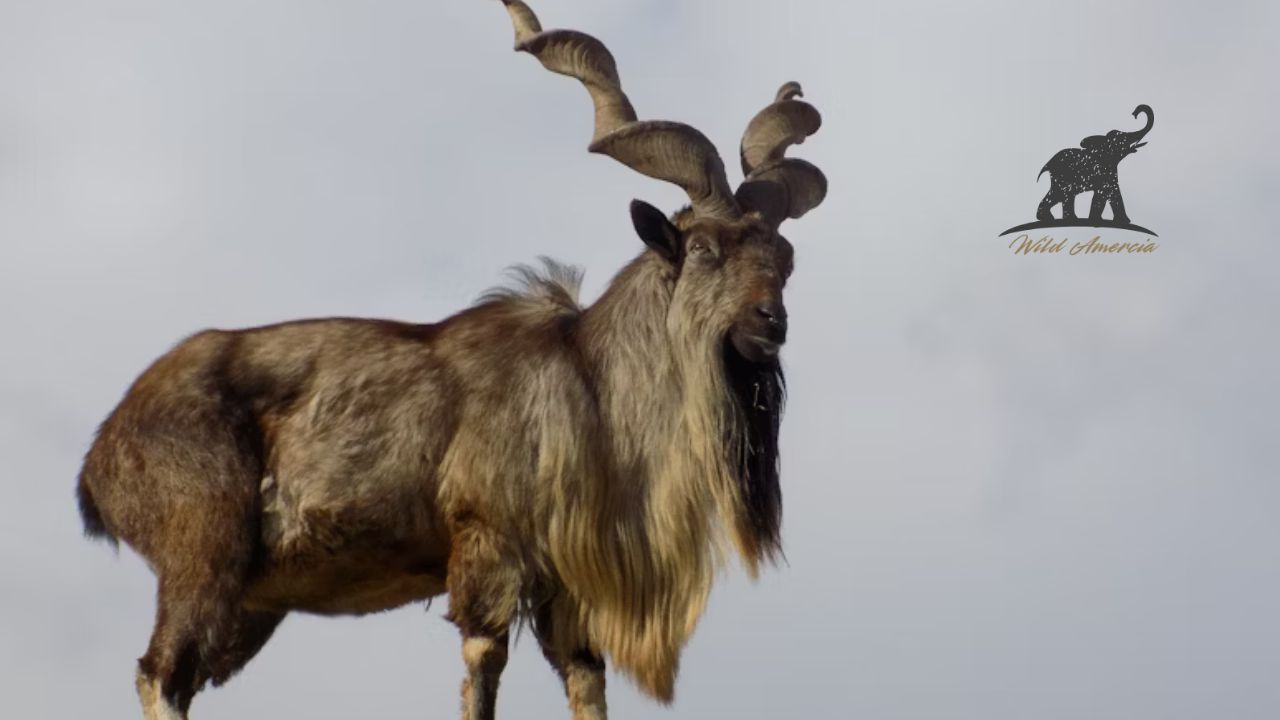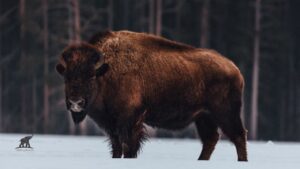Deep within the rugged mountains of Central Asia lives a truly spectacular creature. The magnificent Bukharan Markhor, with its iconic spiral horns, is a symbol of untamed wilderness and a testament to incredible conservation success. This captivating wild goat once teetered on the brink of extinction, but its story is one of hopeful recovery.
For anyone fascinated by wildlife, the tale of the Bukharan Markhor is both inspiring and awe-inspiring. It’s a powerful reminder of what can be achieved when communities and conservationists unite to protect a species. This article will explore everything you need to know about this remarkable animal.
Bukharan Markhor at a Glance
| Attribute | Details |
| Common Name | Bukharan Markhor, Tadjik Markhor, Turkmenian Markhor |
| Scientific Name | Capra falconeri heptneri |
| Type | Mammal |
| Diet | Herbivore |
| Habitat | Mountainous regions, scrublands, and open woodlands |
| Range | Tajikistan, Turkmenistan, Uzbekistan, Afghanistan |
| Conservation Status | Near Threatened (upgraded from Endangered) |
| Distinctive Feature | Long, corkscrew-shaped horns on males |
The Comeback Kid of the Mountains
The journey of the Bukharan Markhor is nothing short of extraordinary. Just a few decades ago, its future looked bleak. Relentless poaching and significant habitat loss had pushed this stunning animal to the edge, with population estimates dropping to a terrifying low.
The situation was dire. In the early 2000s, fewer than 250 individuals were thought to remain in Tajikistan, one of its primary strongholds. The very survival of the Bukharan Markhor was in question, a tragic prospect for such a unique subspecies.
A Turnaround for the Ages
Then, a remarkable shift began. Concerted conservation efforts, driven by international organizations, national governments, and local communities, started to make a profound difference. These programs were not just about protecting the Bukharan Markhor; they were about creating a sustainable future for both the animals and the people who share their environment.
Anti-poaching patrols were established, and community-based conservancies were created. These initiatives provided local people with a direct stake in the well-being of the Bukharan Markhor, transforming them from potential threats into dedicated guardians. The results have been phenomenal.
Thanks to these incredible efforts, the population of the Bukharan Markhor has rebounded in a spectacular fashion. Today, estimates suggest the population has surged to over 10,000 individuals in some parts of its range. This success led the IUCN to downgrade its status from Endangered to Near Threatened in 2015—a massive victory for wildlife conservation. The story of the Bukharan Markhor is now a celebrated example of how a species can be pulled back from the brink.
Understanding the Bukharan Markhor
To truly appreciate this animal, you have to understand what makes it so special. The Bukharan Markhor is one of several subspecies of markhor, all known for their incredible horns.

Physical Characteristics
The most striking feature of the male Bukharan Markhor is its set of tightly spiraled, corkscrew-like horns. These majestic horns can grow up to 1.5 meters (about 5 feet) in length! They are not just for show; males use them in dramatic clashes to establish dominance and win mating rights.
- Coat: Their coat changes with the seasons. In summer, it is a shorter, reddish-brown, which helps them blend into the rocky, arid landscape. In winter, it grows longer and thicker, with a grayer color and a shaggy undercoat to provide insulation against the bitter cold.
- Size: Males are significantly larger than females, standing up to 100 cm (40 inches) at the shoulder and weighing as much as 110 kg (240 lbs). Females are more slender and have much shorter, less dramatic horns.
- Beard: Both males and females sport a beard, but the male’s is much longer and more impressive, especially during the winter months, adding to its regal appearance.
The unique appearance of the Bukharan Markhor makes it an unforgettable sight for anyone lucky enough to spot one in its natural habitat.
Habitat and Diet
The Bukharan Markhor is a master of mountain life. It thrives in the steep, rocky terrain of Central Asia’s lower and medium-altitude mountains, typically between 600 and 3,600 meters. These habitats include arid woodlands, juniper forests, and scrublands.
As a herbivore, its diet consists mainly of grasses, leaves, and other vegetation. They are surprisingly agile climbers, able to navigate sheer cliff faces to forage for food. During the harsh winter, when snow covers the ground, the Bukharan Markhor may move to lower elevations in search of sustenance. This adaptability is key to its survival.
The Value of the Bukharan Markhor
When we talk about the “net worth” of an animal, it isn’t about money in a bank. For the Bukharan Markhor, its value is measured in ecological importance, cultural symbolism, and its role in sustainable community development.

Ecological and Symbolic Worth
As a keystone species, the Bukharan Markhor plays a vital role in its ecosystem. By grazing, it helps shape the vegetation, which affects other species. It is also a prey animal for predators like the snow leopard, making it an integral part of the food web.
Culturally, the markhor is a powerful symbol. Its name is thought to derive from Persian words meaning “snake eater,” possibly due to its spiraling horns resembling a snake. In local folklore, it is often seen as a mystical creature capable of killing snakes and possessing healing properties. The Bukharan Markhor is a source of national pride, particularly in countries like Tajikistan and Pakistan (which features a different markhor subspecies as its national animal).
Conservation and Community Feedback
The success of the Bukharan Markhor conservation programs offers a powerful model. Wildlife enthusiasts and conservationists often praise these community-led initiatives.
One conservation manager noted, “Seeing the Bukharan Markhor thrive again is profoundly rewarding. The key was empowering local communities. When they benefit directly from protecting the wildlife through jobs in ecotourism and conservation, the results are transformative.”
A wildlife photographer who spent weeks tracking the animal shared his experience: “It’s a humbling experience to witness a male Bukharan Markhor navigate a cliff. There’s a powerful sense of ancient wisdom in them. The local guides’ passion for protecting these animals is truly inspiring. Rating: 5/5 stars for this conservation success story!”
This positive feedback highlights a critical point: successful conservation is collaborative. The future of the Bukharan Markhor is intrinsically linked to the prosperity of the human communities that surround it. This is why the sustainable trophy hunting programs, while controversial to some, have been instrumental. The significant revenue they generate funds the anti-poaching patrols and community projects that protect the entire Bukharan Markhor population.
Threats and the Path Forward
Despite the incredible recovery, the Bukharan Markhor is not entirely out of danger. Several threats still linger, requiring ongoing vigilance.
Persistent Challenges
- Poaching: Although greatly reduced, illegal hunting for meat and horns still occurs. The high value of markhor horns on the black market remains a tempting lure for poachers.
- Habitat Degradation: Competition with domestic livestock for grazing land is a significant issue. As human populations expand, the natural habitat of the Bukharan Markhor becomes fragmented and reduced.
- Climate Change: Changing weather patterns could impact the availability of food and water sources in their mountainous home, posing a long-term threat to the survival of the Bukharan Markhor.
Protecting the remaining habitat and ensuring that local communities continue to see the value in a living Bukharan Markhor are the cornerstones of its future survival. Continued monitoring and adaptive management strategies are essential to ensure this magnificent creature continues to grace the mountains of Central Asia for generations to come. The Bukharan Markhor stands as a powerful emblem of hope.
Frequently Asked Questions (FAQs)
Why is it called the Bukharan Markhor?
The Bukharan Markhor is named after the historic city of Bukhara in Uzbekistan, which was a major center in the region where this subspecies is found. It’s one of several subspecies, each named for its geographic location.
Are Bukharan Markhor dangerous to humans?
No, the Bukharan Markhor is generally shy and avoids human contact. Like any wild animal, it can be dangerous if it feels cornered or threatened, especially a large male during the mating season, but they do not pose a direct threat to people.
What is the main difference between a Bukharan Markhor and other markhor?
The primary difference lies in the shape of their horns. The Bukharan Markhor has horns with a tighter, more corkscrew-like spiral. Other subspecies, like the Astor Markhor, have horns that flare out into a wider, more open spiral.
How did conservationists save the Bukharan Markhor?
They saved the Bukharan Markhor through a combination of strategies. This included establishing protected areas, creating effective anti-poaching patrols, and, most importantly, involving local communities. These community-based conservation programs provide jobs and ensure that locals benefit financially from protecting the Bukharan Markhor, turning them into its most effective allies.
Can I see a Bukharan Markhor in the wild?
Seeing a Bukharan Markhor is a rare and special experience. It requires traveling to remote, mountainous regions of Tajikistan, Turkmenistan, or Uzbekistan. Several ecotourism companies, working with local conservancies, offer guided treks for wildlife enthusiasts hoping to catch a glimpse of this amazing animal. The continued success of the Bukharan Markhor depends on this support.
Admin Recommendation
Cottonmouth Snakes in North Carolina (NC): Key Facts
The Fascinating World of Arctic Fox Fur












